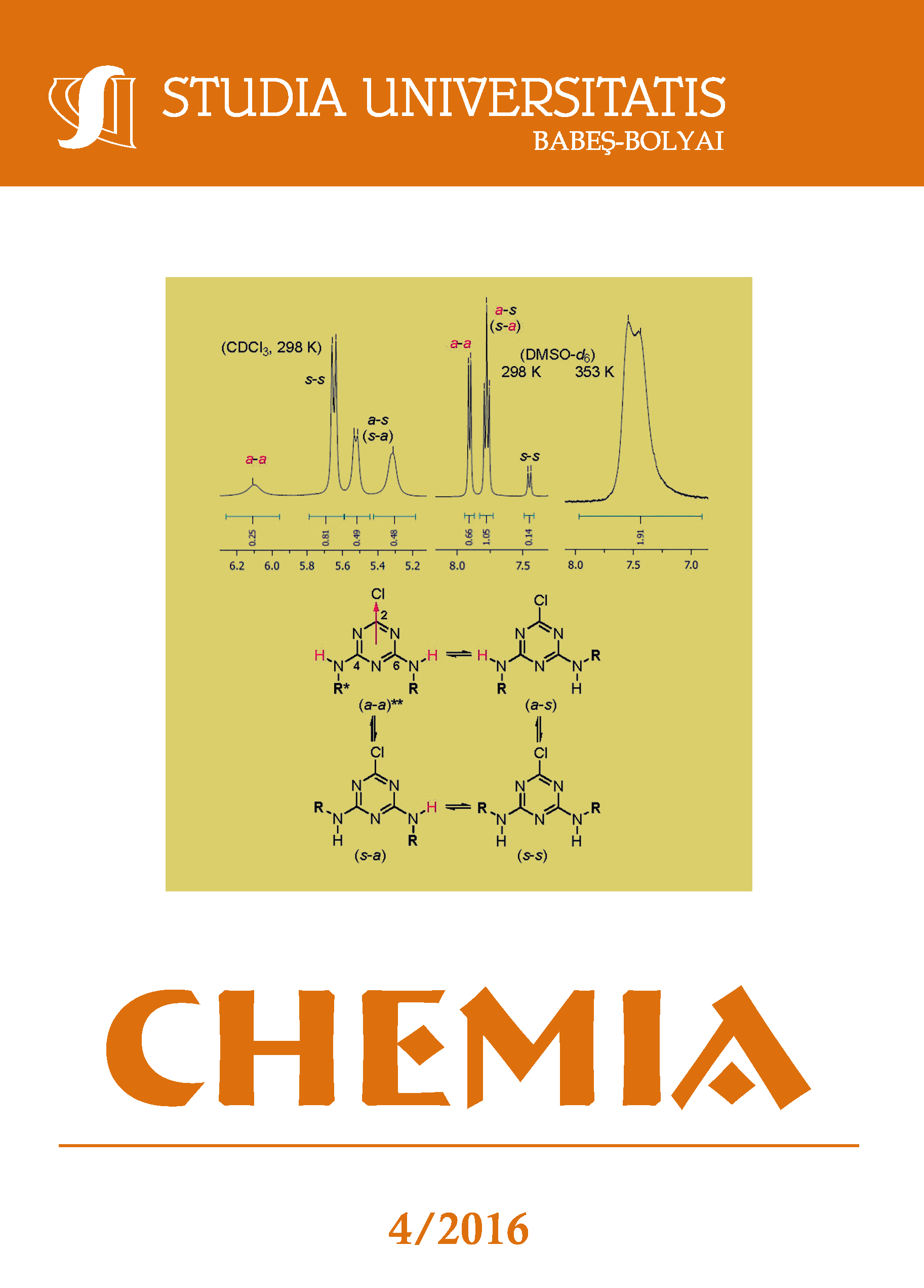CHEMICAL-MINERALOGICAL CHARACTERISATION OF BELITES FROM EXPERIMENTAL SAB CLINKERS
Keywords:
SAB clinker, belite polymorphs, mineralogy, XRDAbstract
Guided by theoretical (sulphoaluminate belitic) SAB clinker chemical compositions, raw materials of known chemical composition (locally sourced from the Carpathian orocline), were mixed and tested by burning in laboratory conditions at different temperatures 1220, 1240 and 1260°C. The resulting materials were analyzed by optical transmission and reflection microscopy (using HF etching) and completed with XRD analyses. In this paper, we describe chemical and mineralogical characterization of clinker belitic components manufactured in laboratory conditions. Belite nests and clusters with complex zoned structure are observed optically in interstitial material of the clinker that is composed of sulfoaluminate, ferrite and anhydrite. These structures display all three morphological types of belite, corresponding to the different polymorphs of belite, depending on the burning and quenching conditions of the clinker. The XRD patterns are interpreted to show that the appearance of β- and α’-belite and different α’àβ transition forms are due to cooling to room temperatures and presence of the belite polymorph stabilizing ions SO3, Al3+, Fe3+ and alkali. The conclusions of the study were that belites were formed in various mixtures of raw materials treated at low burning temperatures, relatively slow cooling rates (resulting in different proportions of impurity absorption) and with some experiments run under reducing conditions during firing. Chemically, the lime saturation factor of clinkers is low (LSF= 0.74 - 0.84), such compositions favoring the clinker belite component; the silica ratio is low (SR < 1.5), which can improve the burnability of the clinker; the alumina ratio is medium (AR= 1.5 - 2.5), chemically restricting the solid solution of mineral phases, and the hydraulic modulus (HM) is under 1.7, enhancing resistance to chemical attack.
References
Zhang, M. Su & Y. Wang, Advances in Cement Research, 1999, 1, 15-21.
Quillin, Cement Concrete Resources, 2001, 31, 1341.
Palou, J. Majling and I. Janotka, Proceedings of the 11th International Congress on the Chemistry of Cement (ICCC) Durban, South Africa, 2003, 1896.
Alaoui, A. Feraille, A. Steckmeyer & R. Le Roy, Proceedings of the 12th International Congress on the Chemistry of Cement (ICCC), Montreal, Canada paper 258 (W3-11.3) 2007, 1-8.
İ. Soner, “Utilization of Fluidized Bed Combustion Ashes as Raw Material in the Production of a Special Cement”; In partial fulfilment of the requirements for the degree of Master of Science in Chemical Engineering, Middle East Technical University, Haziran, Turcia, June 2009.
I.A. Chen & M.C.G. Juenger, Journal of Material Science, 2009, 44, 2617.
G.S. Li, G. Walenta & E. Gartner, Proceedings of the 12th International Congress of the Chemistry of Cement (ICCC), Montreal, CA, paper 398 (TH3-15.3), 2007,1-12.
G.K. Moir and F.P. Glasser, Proceedings of the 9th International Congress on the Chemistry of Cement (ICCC), New Delhi, India, 1992, 125-152.
Barnes, C.H. Fentiman & J.W. Jeffery, Acta Crystallographica, 1977, A36, 353.
S.A. Guinier and M. Regourd, 5th International Symposium on Cement and Concrete, 1969, Vol. 1, p. 1.
P.B. Moore, American Mineralogist, 1973, 58, 32.
Udagawa, K. Urabe, M. Natsume, and T. Yano, Cement and Concrete Research, 1980, 10, 139.
W.G. Mumme, R.J. Hill, G. Bushnell-Wye and E.R. Segnit, Neues Jahrbuch für Mineralogie, 1995, 169, 35.
Bonafous, C. Bessada, D. Massiot, J.-P. Coutures, B. Le Rolland, & P. Colombet, Journal of the American Ceramic Society, 1995, 78, 2603.
Y.J. Kim, I. Nettleship and W.M. Kriven, Journal of the American Ceramic Society, 1992, 75, 2407.
D.H. Campbell, “Microscopical Examination and Interpretation of Portland Cement and Clinker”. Edited by: Natalie C. Holz, Portland Cement Association, Published by: Portland Cement Association USA, 1999.
Yannaquis and A. Guinier, Bulletin de la Société Française de Minéralogie et de Crystallographie, 1959, 82, 126.
C.J. Chan, W.M. Kriven, and J.F. Young, Journal of the American Ceramic Society, 1988, 71, 713.
Taylor, “Cement chemistry”, second edition, Thomas Telford Publishing, 1997, London.
Regourd, M. Bigare, J. Forest and A. Guinier, in 5th International Symposium on Cement and Concrete, 1969, Vol. 1, p. 44.
Ono, S. Kawamura and Y. Soda, in 5th International Symposium on Cement and Concrete, 1969, Vol. 1, p. 275.
Ono, “Microscopic Analysis of Clinker,” Onoda Cement Co., Central Research Laboratory, 1973/12/15 and 1975/6/22. Paper supplied to students at Hawaiian seminar, 1975.
Yamaguchi and S. Takagi, in 5th International Symposium on Cement and Concrete, 1969, Vol. 1, p. 181.
Insley, “Structural Characteristics of Some Constituents of Portland Cement Clinker,” Journal of Research of the National Bureau of Standards, Vol. 17, Research Paper RP917, Washington, D.C., September 1936, pp. 353-361.
Kühl, „Der Kalkstandard der Portlandzemente”. Tonindustrie-Zeitung, 1933, 57, Heft 40, S. 460-464.
Kühl, „Hydraulischer modul und Hydraulefaktoren- Verhältnis im Portland- zement”. Protokoll des VDPCF, 1913, S. 399-408.
Kühl, „Der junge Zementchemiker”, Zement 1926, 15, Heft 36. S. 636/639,
Kühl, Der Kalksättigungsgrad, Zement, 1931, 20, Heft 6, S. 123-125.
Nasir and H. El Etr, Qatar University Science Journal, 1996, 16(2), 315.
M.S. Idris, K.N. Ismail, S.B. Jamaludin, C.R., Ghazali and K. Hussin, American Journal of Applied Sciences, 2007, 4(5), 328.
N.H. Deborah & D.E. Thomas, Journal of Cleaner Production, 2009, 17, 668.
Hall and K.L. Scrivener. Journal of Advanced Cement-Based Materials, 1998, 7(1), 28.
Ingham, „Geomaterials under the microscope, a colour guide, building stone, roofing slate, aggregate, concrete, mortar, plaster, bricks, ceramics and bituminous mixtures, in transmitted polarised light, under Jenapol petrographic microscope and by XRD method”. Manson Publishing, 2013.
Ono, Proceedings of the Third International Conference on Cement Microscopy, International Cement Microscopy Association, Houston, Texas, 1981, pp. 198-210.
D.H. Campbell, “Microscopical Examination and Interpretation of Portland Cement and Clinker”. Edited by: Natalie C. Holz, Portland Cement Association, Published by: Portland Cement Association USA, 1999.
Downloads
Published
How to Cite
Issue
Section
License
Copyright (c) 2016 Studia Universitatis Babeș-Bolyai Chemia

This work is licensed under a Creative Commons Attribution-NonCommercial-NoDerivatives 4.0 International License.



